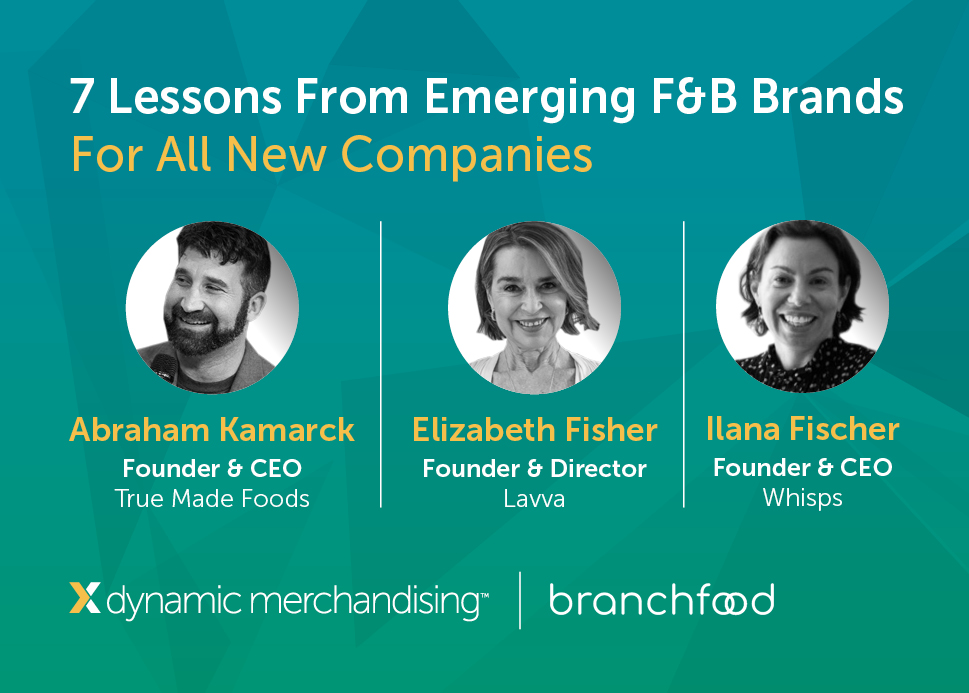
As part of our webinar series in collaboration with Branchfood, we brought together founders of emerging brands to discuss best practices for brands to successfully engage with buyers, boost conversions, and grow their presence to win in retail. Listen to the full webinar or find out more about Trax Dynamic Merchandising for emerging brands.
The Food & Beverage (F&B) business is truly competitive, with new players constantly joining the fray. So how can your emerging F&B brand survive and thrive? Here are 7 tips from successful F&B brands that can help you with your business.
Geographic nearness is important for all brands in the early stages of establishment. Being physically close to the stores you are in when you first launch provides you with the opportunity to support the stores and your brand in-person. It is a cost-effective way to popularize your brand through demos, collect informal feedback from store visitors, and generally gather other data that you would be unable to from afar.

Sharing his experience, Abraham Kamarck, founder and CEO of sugar-free condiment brand True Made Foods, revealed that it took him three years after the initial launch of his brand in 2015 to realize this. He eventually recognized the value of launching True Made Foods closer to his own location, before spreading out.
That way, he explains, when you are finally ready to expand, you have the necessary knowledge to make the move. Then, when the brand is big enough to use third-party store reps like you will know how to measure success and identify areas of improvement as a result of having done it all before.
When it comes to gaining visibility for products on shelf, brands must pay special attention to store layouts and aim for optimum exposure.
This was especially important for True Made Foods given the large number of options available for condiments like ketchup. So when Abraham noticed his products were being placed on the bottom shelves in some stores, he started looking for stores with vertical shelf lineups for products in the ketchup and sauces category. He recommends other brands in similar categories with high competition do the same to afford better chances of discovery for their brand.
For health-based F&B brands, having a stamp of approval from relevant bodies or people is a great way to gain consumer trust. This approval could come from dieticians, nutritionists, or other relevant health authorities. This is not the same as getting approvals from bodies such as the FDA, for instance. While those are compulsory, getting additional recommendation from credible sources adds further value to the brand.

Ilana Fischer, founder and CEO of healthy cheese crisps brand Whisps, suggests brands can send their product samples to independent dieticians to recommend to their clients. Even certain big retailers like Whole Foods and Wake Fern have such personnel, and sending them samples could be a good way to get attention from the buyers there.
Since budgets for new brands are often constrained, entrepreneurs need to find out-of-the-box ways to market their products. One tried-and-tested method is sampling, but that can be a drain on resources and, in light of the pandemic, not particularly attractive for many.

Instead, Elizabeth Fisher, founder and director of gluten- and dairy-free product brand Lavva, suggests brands try non-sampling demos as a way to popularize their brand. These could include creating small sample sachets and bundling them alongside coupons for customers to use during their next purchase, and distributing VIP coupons and literature about the company. Instant redeemable coupons (IRC) are also effective.
To get into large retailers, new brands need to demonstrate that their business foundation is based on solid data. However, such data is often expensive to buy and first-hand research can also be time consuming.
Instead, new brands can leverage data available to business communities. For instance, members of Startup CPG can take advantage of the free data that is a perk of the organization’s partnership with NielsenIQ. Similarly, being part of Foodbevy provides F&B brands with a network of IRI partnerships. Plant Based Foods Association also sponsors its own research that members can get access to.
In addition to all these sources, there is also the option of getting data from brokers. This may be more costly compared to the rest, but it can provide specifics into how competitors are doing and other relevant information you can’t always get from buyers. This serves as a window into your category, helping you stay competitive.
As a new brand, it may seem tempting to say yes to all requests as there is a lot of pressure on entrepreneurs from investors or buyers to start making revenue. However, it is important to go slow and establish your brand, focus on quality, and prioritize values over rapid growth.
Ilana recounted one of her experiences when trying to come up with a new flavor of cheese. She was given a deadline for launch but the production just couldn’t meet her quality expectations. So, instead of rushing ahead with a less-than-perfect product, she chose to prioritize values over fast growth and decided not to create that flavor.
Sales at cooperatives (co-op) in the US amount to billions of dollars and comprise chains that all have different preferences. Co-ops are also the third-largest in terms of customer volumes. Each co-op buys individually, with a few exceptions.
Elizabeth advises that sometimes, depending on the brand, it is better to start from a local co-op before expanding regionally. She suggests that there is no substitute to knocking on doors to find out who your customers are in stores, networking, and going back a few times until you find the right customer.
Given the competition in the F&B space, making a name and brand identity requires time and patience. A deep understanding of the market, consumers’ needs, and access to the right networks will enable you to get started and survive.
Give us some info so the right person can get back to you.